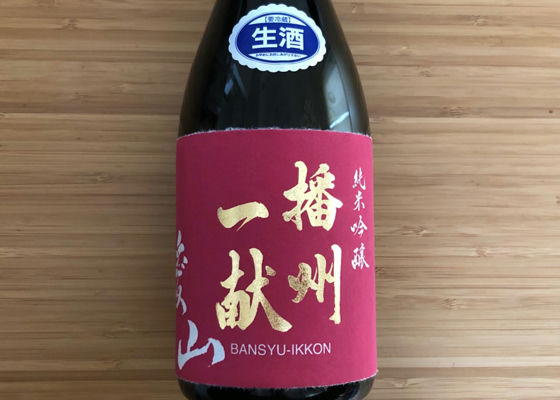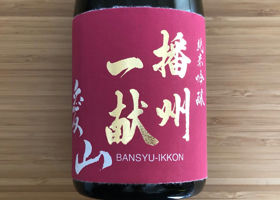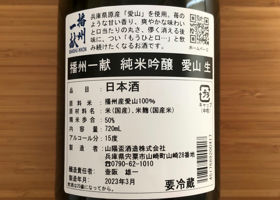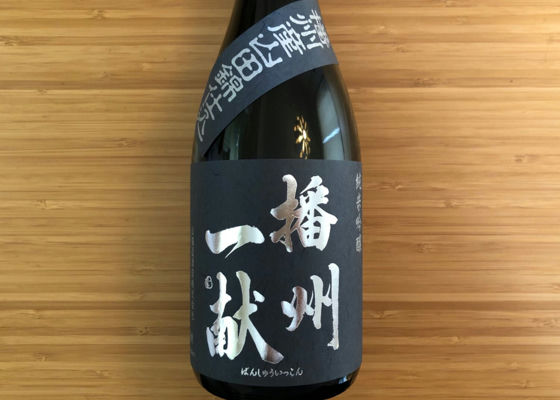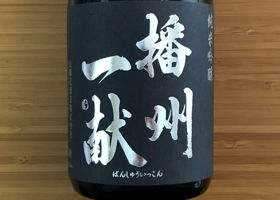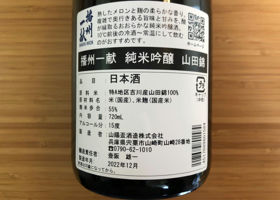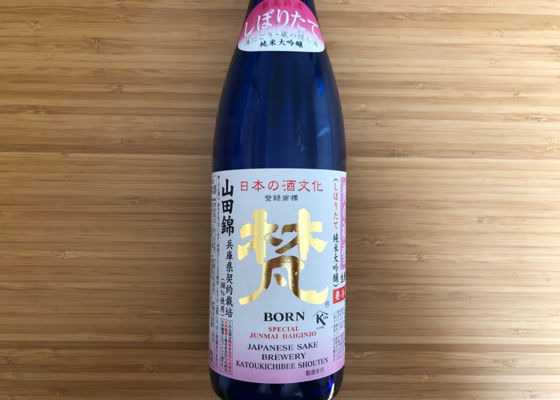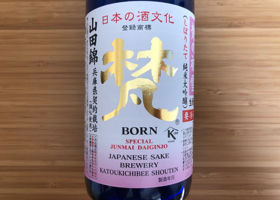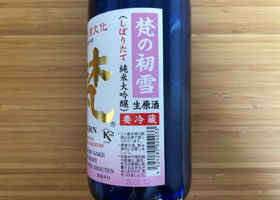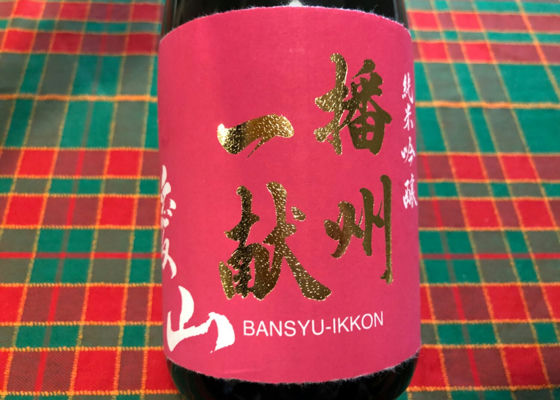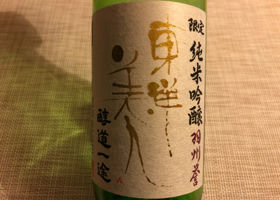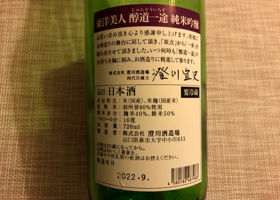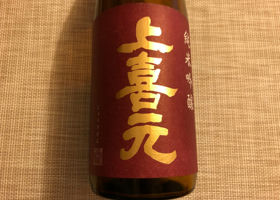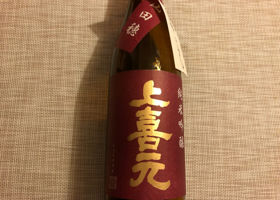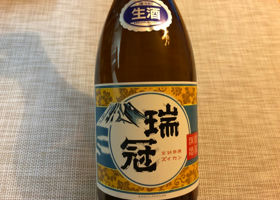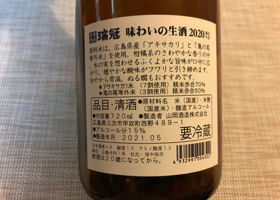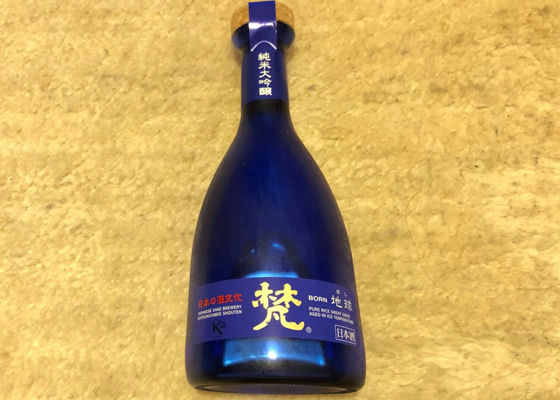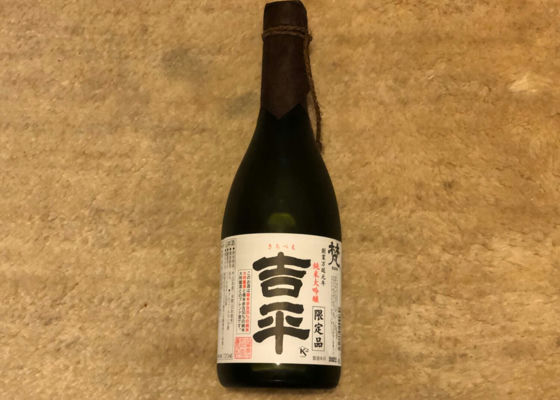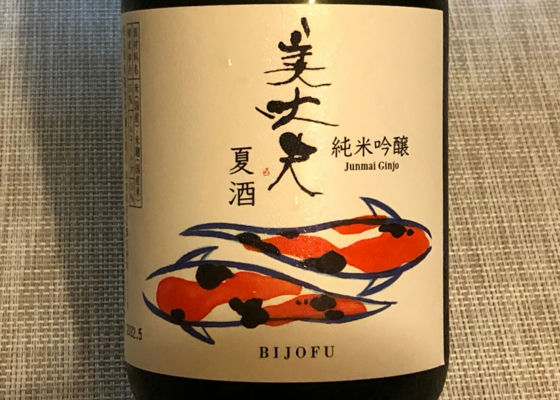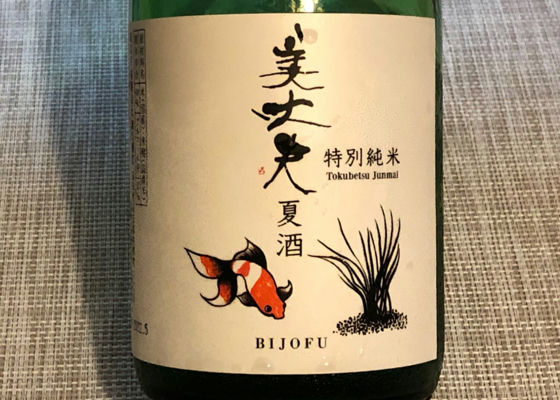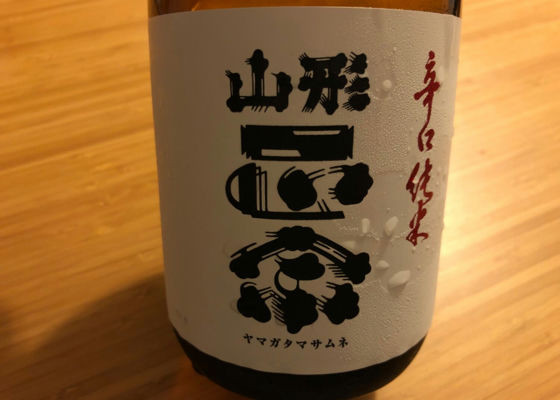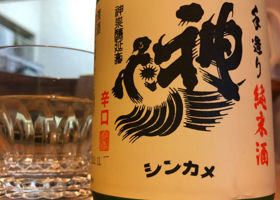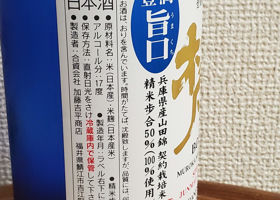Timeline
ゆーへーIt has an aroma like white grapes, with a slightly bitter aftertaste that goes away quickly.
I have had hi-ire sake before, but this was my first time drinking nama-zake.
It still has a strong "sizzling" taste, and the sweetness is young and refreshing.
I guess Aizan = pink is a common image.
The label is also good, with a special touch of Japanese paper and sparkling letters.
720 mL ¥ 1,980 ポンちゃんHi Yoohee-san, 🌥️
I'm so jealous that you're drinking Banshu Issen again, and Aizan at that! I'm just so jealous 😆 And it's a draft sake too ❣️ I guess it's good with a little strong food if it's a bit shwashy 😊. ゆーへーGood evening, Mr. Pong. ⭐︎
I wanted to compare them, so I drank them in succession.
I think it has a strong flavor on its own, so it won't be overpowered by a strong meal. ゆーへーThe melon-like sweetness flows smoothly through the nose.
The sweetness and umami of the rice can be felt because it is made from Yamada-Nishiki.
Since it is fire-aged, I kept it at room temperature in winter, and it was good for its freshness.
As I expected, this sake is a representative of Hyogo.
I would like to drink other kinds of sake more and more in the future.
720 mL ¥ 1,870 ポンちゃんHi Yoohee, ☀️
I couldn't drink it at the offline meeting, so I wanted to drink it right away when I saw the picture 😆 It's delicious Banshu Issen 💕. ゆーへーGood evening, Ms. Pon.
I tend to be put off because it's rather easy to get in Kansai, but it's a stable taste 🍶.
I like the sparkling letters on the label too! ゆーへーIt has a cherry-like aroma and sweetness that spreads and thickens slightly.
The alcohol is a little strong, but the aftertaste is refreshing.
All Bon labels look similar, but there is so much information that you can't tell the difference unless you look at them properly.
This time it was a blend of 35% and 50% polished Yamadanishiki.
The other had Gohyakumangoku, which I should have compared.
720mL ¥ 1,980 ゆーへーIt is super slightly carbonated, with an elegant sweetness that flows smoothly and a slight sourness.
Banshu Issen has an image of being dry, but perhaps because it is made with Aizan, a little sweetness is added, making it easy to drink on its own.
The paper quality of the label is also a nice touch.
By the way, when I hear the name "Aizan," I think of red or pink, perhaps because of the label.
720 mL ¥ 1,870 ゆーへーA pear-like aroma develops, and the sweetness recedes with some residual sweetness.
It is neither too sweet nor too spicy, and can be enjoyed on its own or as an in-between-dinner drink.
The rice used for the sake keeps changing, so I am excited to see what the next one will be.
The fact that the color of the sake rice on the label changes with the image also shows the attention to detail.
720 mL ¥ 1,650 ゆーへーIt has a tangy, slightly bitter taste with the sweetness of rice in the mouth.
It is easy to get a hold of limited editions right away, but I have purchased and kept a bottle of the regular product and look forward to comparing the two.
The simple rouge-colored label gives a sense of autumn at a glance, and I think it is my favorite among Kamikimoto's products.
720 mL ¥ 1,562 ゆーへーAfter spreading in the mouth, one can taste the bitterness.
I thought it would mellow out over time, but even on the second day, the bitterness was not removed.
I wonder if it is twisted because it was made in May 2021, so it has been over a year.
Or is it because Zuikan is a dry sake?
It would be better to warm it up to lukewarm.
720 mL ¥ 913 ゆーへーIt is a little thick and sweet, but has a clean aftertaste.
It has a pineapple aroma.
The bottle is corked, so I thought it would be better to drink it on the same day.
The blue bottle is supposed to be a beautiful representation of the earth, as the title suggests.
I don't usually buy in this price range, but I bought it because I got a coupon from a liquor store.
I guess it is for overseas.
500 mL ¥ 2,464
ゆーへーPineapple.
Sweet and tasty with a little thickening.
I've been curious about it for a while, but I didn't really get into this price range for everyday drinking.
This time I bought it because there is a special distributor in my neighborhood and I had a discount coupon.
The label is messy, but the taste is to my liking.
You can tell that they are targeting overseas rather than domestic consumers.
750 mL ¥ 2,431
ゆーへーIt has a slight sweetness, but it seems to flow quickly and smoothly.
I compared it with Tokusyu Junmai, which is more smooth and smooth.
On the contrary, I personally preferred the special junmai because of its lack of character.
The picture on the bottle is different from that on the four-pack bottle, and the label is made the best use of its size, which shows the attention to detail.
720 mL ¥ 1,606 ゆーへーThe sweetness and umami of the rice is gusto.
There is a slight apple aroma.
After a month of being behind everyone else, I finally got to drink some summer sake.
The goldfish caught my eye right away, so I bought the jackets.
It is a famous Bikyuu in Kochi, but I'll probably buy it again if I see it again because of the loose picture on the jacket.
The rainy season has just ended, and already we have a full moon, which is a bit like autumn.
720 mL ¥ 1,320 ゆーへーIt is dry, but when you put it in your mouth, the sweet aroma spreads and quickly recedes.
This taste is quite good for a junmai sake.
This is one that will become a standard in my opinion.
720 mL ¥ 1,540 ゆーへーThe color is slightly yellowish, thickened and aromatic.
It is a little like sake from the olden days.
After 3 days of drinking, the corners are removed and the sweetness is felt, making it very easy to drink.
720 mL ¥ 1,729 boukenIt's mild and fruity on the palate. The internet says it's out of production, but it doesn't feel like it's out of production at all. I wonder how it's really doing? RecommendedContentsSectionView.title
